
The 17th (Northern) Division was an infantry division of the British Army, a Kitchener's Army formation raised during the Great War.
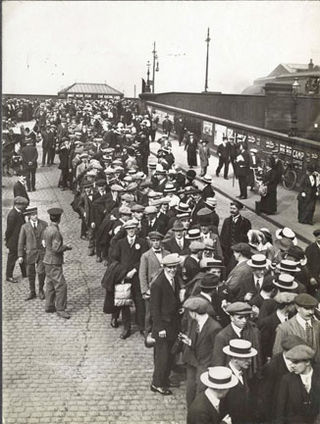
The Pals battalions of World War I were specially constituted battalions of the British Army comprising men who had enlisted together in local recruiting drives, with the promise that they would be able to serve alongside their friends, neighbours and colleagues, rather than being arbitrarily allocated to battalions.

Private John Cunningham VC was a British Army soldier and an English recipient of the Victoria Cross (VC), the highest and most prestigious award for gallantry in the face of the enemy that can be awarded to British and Commonwealth forces. John was born in Swains Yard off Manley Street, Scunthorpe and was the eldest son of Charles and Mary Cunningham.

The 31st Division was an infantry division of the British Army. It was raised in the Great War by volunteers from Kitchener's Army and formed in April 1915 as part of the K4 Army Group and taken over by the War Office on 10 August 1915. Comprising mainly infantry battalions from Yorkshire and Lancashire, the division was sent to Egypt in December 1915 before moving to France in March 1916 and spent the remainder of the First World War in action on the Western Front. The 31st Division was the quintessential New Army division, being made up entirely of Pals battalions.
The Accrington Pals, officially the 11th (Service) Battalion (Accrington), East Lancashire Regiment, was a pals battalion of Kitchener's Army raised in and around the town of Accrington during the First World War.

George Sanders VC MC was an English recipient of the Victoria Cross, the highest and most prestigious award for gallantry in the face of the enemy that can be awarded to British and Commonwealth forces.
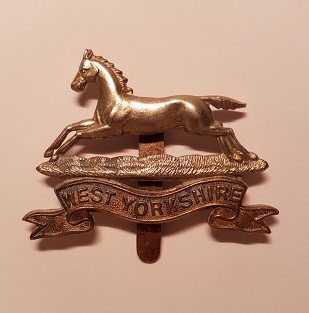
The West Yorkshire Regiment (Prince of Wales's Own) (14th Foot) was an infantry regiment of the British Army. In 1958 it amalgamated with the East Yorkshire Regiment (15th Foot) to form the Prince of Wales's Own Regiment of Yorkshire which was, on 6 June 2006, amalgamated with the Green Howards and the Duke of Wellington's Regiment (West Riding) to form the Yorkshire Regiment (14th/15th, 19th and 33rd/76th Foot).

Major William Booth was a cricketer who played for Yorkshire County Cricket Club between 1908 and 1914, a season in which he was named one of the Wisden Cricketers of the Year.
The Sheffield City Battalion was a Pals battalion during the First World War.
The Barnsley Pals were two British Army Pals battalions during the First World War.
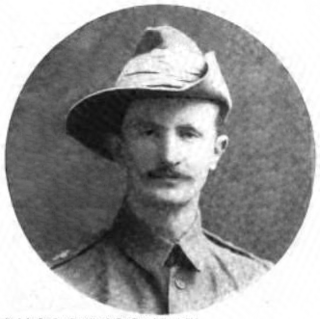
Charles Henry Wellesley Wilson, 2nd Baron Nunburnholme, CB, DSO,, was a British peer, and one of the heirs to the Thomas Wilson Sons & Co., a Hull-based shipping company that built a near-monopoly over affordable travel packages from Scandinavia and the Baltic. He was an officer in the Volunteers and saw active service in the Second Boer War and World War I. During the later war he was distinguished for the number of new units that he recruited for the war effort, notably the "Hull Pals".
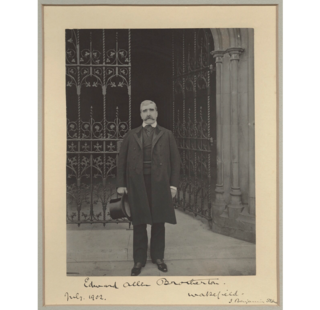
Edward Allen Brotherton, 1st Baron Brotherton,, known as Sir Edward Brotherton, Bt, between 1918 and 1929, was an industrialist in Wakefield, West Riding of Yorkshire, England and a benefactor to the University of Leeds and other causes. He was also a Conservative Party politician, and sat in the House of Commons between 1902 and 1922.

The Middleton family has been related to the British royal family by marriage since the wedding of Catherine Middleton and Prince William in April 2011, when she became the Duchess of Cambridge. The couple has three children, George, Charlotte and Louis. Tracing their origins back to the Tudor era, the Middleton family of Yorkshire of the late 18th century were recorded as owning property of the Rectory Manor of Wakefield with the land passing down to solicitor William Middleton who established the family law firm in Leeds which spanned five generations. Some members of the firm inherited woollen mills after the First World War. By the turn of the 20th century, the Middleton family had married into the British nobility and, by the 1920s, the family were playing host to the British royal family.
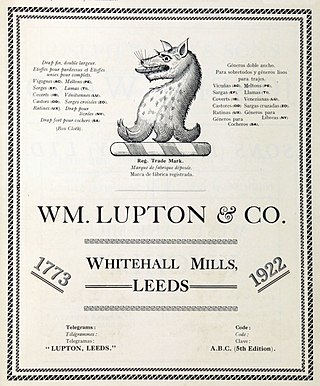
The Lupton family in Yorkshire achieved prominence in ecclesiastical and academic circles in England in the Tudor era through the fame of Roger Lupton, provost of Eton College and chaplain to Henry VII and Henry VIII. By the Georgian era, the family was established as merchants and ministers in Leeds. Described in the city's archives as "landed gentry, a political and business dynasty", they had become successful woollen cloth merchants and manufacturers who flourished during the Industrial Revolution and traded throughout northern Europe, the Americas and Australia.
The 92nd Brigade was an infantry formation of the British Army during World War I. It was raised as part of 'Kitchener's Army' and was assigned to the 31st Division. After the original formation was converted into a reserve brigade, the number was transferred to a brigade composed volunteer battalions raised in the city of Kingston upon Hull for 'Kitchener's Army'. It first served in Egypt defending the Suez Canal between January and March 1916. It then left for the Western Front where it was at Serre on the first day of the Battle of the Somme in 1916, though its battalions escaped the worst of the disaster. It continued to serve on the Western Front for the rest of the war, including hard fighting at Oppy Wood, against the German spring offensive and in the final Hundred Days Offensive.
The 93rd Brigade was a formation of the British Army during the First World War. It was raised as part of the new army also known as Kitchener's Army and assigned to the 31st Division. The brigade served in Egypt defending the Suez Canal between January and March 1916, and then left for the Western Front. In April 1918, after suffering heavy casualties the 93rd and 92nd Brigades, were amalgamated for two days, and known as the 92nd Composite Brigade.
The Leeds Rifles was a unit of the 19th century Volunteer Force of the British Army that went on to serve under several different guises in the World Wars of the 20th century. In the First World War, both battalions served as infantry on the Western Front. They were later converted into an anti-aircraft and tank units, and fought in North Africa, Italy, and Burma during the Second World War.
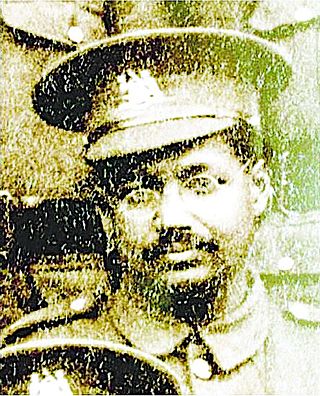
Jogendra Nath Sen was an Indian private soldier in the British Army who fought in the First World War. He is believed to be the first Bengali soldier to have died in the First World War.
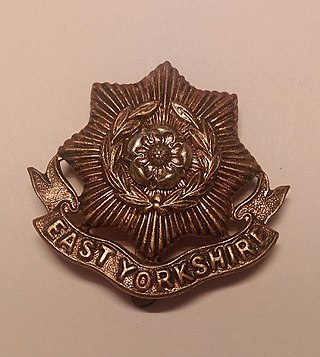
The Hull Pals were a brigade of four battalions of the East Yorkshire Regiment raised as part of Kitchener's Army in 1914. They served in 31st Division at Serre on the first day of the Battle of the Somme in 1916, though they escaped the worst of the disaster. However, they suffered heavy casualties in the same area later in the year, and again at Oppy Wood in early 1917. They continued to serve on the Western Front for the rest of the war, including hard fighting against the German spring offensive and in the final Hundred Days Offensive.

The 8th (Service) Battalion of the East Yorkshire Regiment, was a unit of 'Kitchener's Army' raised shortly after the outbreak of World War I. Following a short period of training it went to the Western Front with other Kitchener battalions and endured a disastrous initiation at the Battle of Loos. It was then transferred to the experienced 3rd Division and fought with it on the Somme, at Arras and Ypres. After heavy casualties the battalion was disbanded early in 1918.














